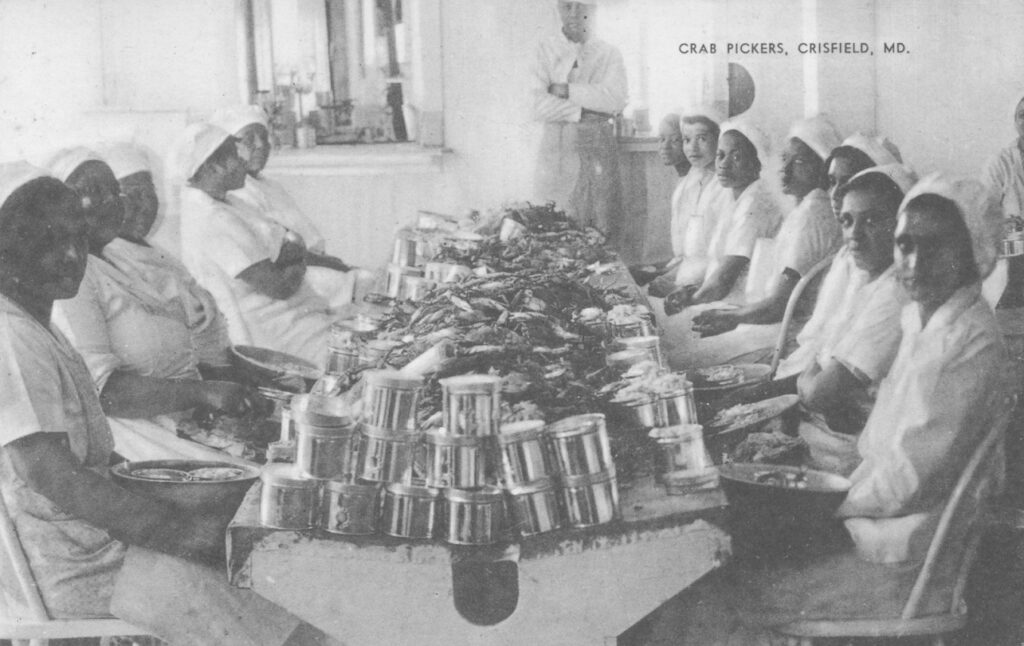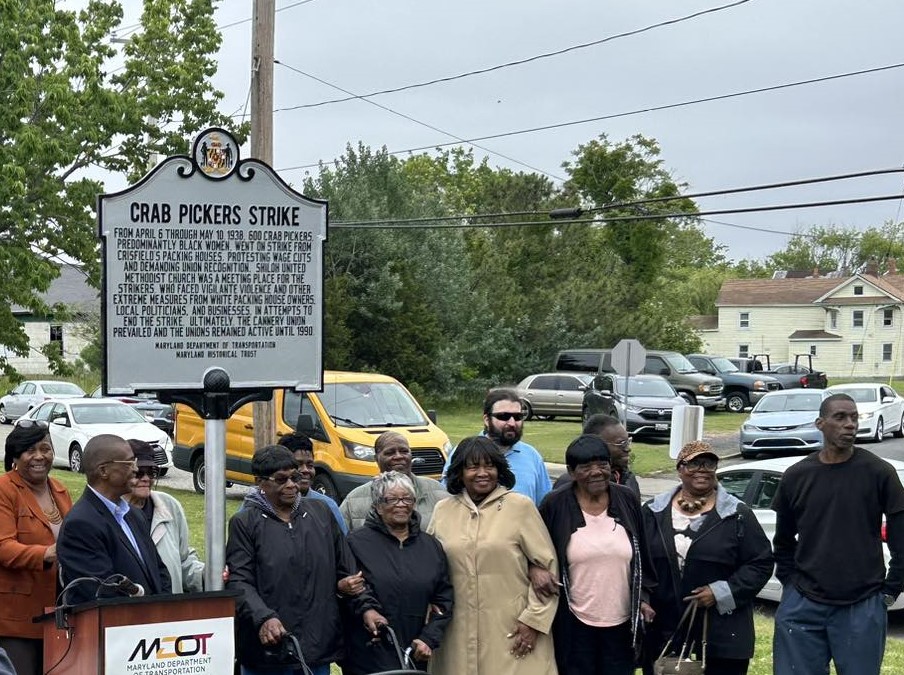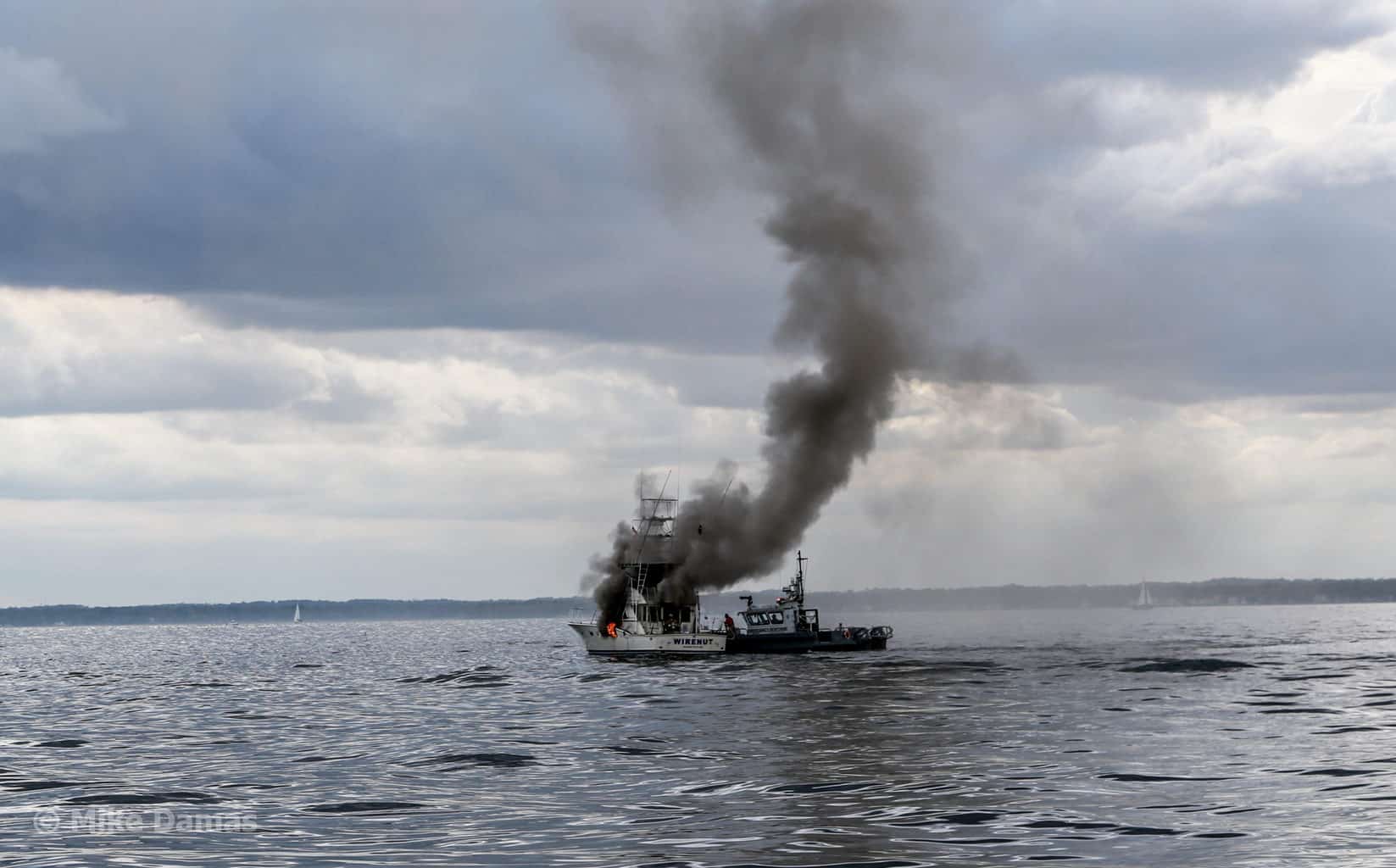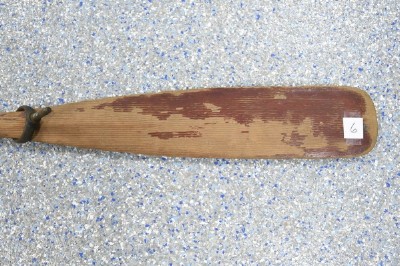The city of Crisfield, Maryland, lays claim to the title “Crab Capital of the World”. Chesapeake Bay blue crab processing was an economic engine for Crisfield, going back at least a century.
As of this week, a pivotal event in Crisfield’s crab legacy will be remembered thanks to a historical marker just installed. On Friday, a ceremony was held to unveil the state historic marker detailing the Crab Pickers Strike of 1938. The five-week strike by mostly Black female crab pickers was a bold stand against pay cuts for the women who kept the crab industry running.
At one time there were more than 20 crab packing houses in Crisfield, producing more crabmeat than any other city or town in Maryland. In 1938, the city of Crisfield alone produced 13% of the Maryland hard crab catch, according to Pete Lesher, Chief Historian at the Chesapeake Bay Maritime Museum. That year, Lesher says, the Crisfield catch was 25,949 barrels of crabs, barrels weighing an average of 100 pounds.

The crab houses relied on laborers to do the tedious job of picking all that crabmeat from the shell—hundreds of crab pickers worked in Crisfield, most of whom were Black women. They toiled for long hours, sometimes 12 to 15 or 16 hours a day. The pressure was high to pick a lot of crabs in very little time, since they were paid by the gallon. The crab houses deducted from their pay the cost of removing pieces of shell from the meat they picked.
The women even brought their children into the packing plants to crack claws and contribute to their mothers’ total pay. When inspectors came to the crab houses, child workers would hide under the table or be sent outside to play, says Rev. Emanuel Johnson, pastor of Shiloh United Methodist Church and an advocate for Crisfield’s former crab pickers.
So when the crab packing houses announced in 1938 that they would cut the pickers’ pay from 35 cents per gallon of crabmeat to 25 cents, 600 pickers walked out. Most of the crab processing ground to a halt. It had a major impact on Crisfield and caused ripples throughout the Eastern Shore.
“Crabmeat was vital to the livelihoods of the majority of households in Crisfield, a city of nearly 4,000 in the 1940 Census,” Lesher tells us.
When the workers began their strike on April 6, 1938, they demanded their pay be restored and their union be recognized. They faced anger and violence. Strike leaders had their homes broken into and a union leader had her car flipped and burned right in front of Shiloh United Methodist Church, which served as a refuge and meeting place for the striking crab pickers.
Rev. Johnson says, “Vigilante mobs broke into homes and even stopped food deliveries that were intended for the strikers’ families.”
The strike persisted for five weeks, and on May 10, 1938, packing house owners signed an agreement restoring the women’s pay rate to 35 cents per gallon and recognizing the cannery union.
While picking crabs remained hard, tedious work for the pickers, Rev. Johnson says the strike “eventually empowered them, making the crab houses realize those women were essential to the economy and the community.”
On the 86th anniversary of the strike ending, the historical marker was unveiled outside Shiloh United Methodist. It was the result of a 2.5-year process in which a group of Crisfield former crab pickers called the Holy Pickers Union Center, based at Shiloh, petitioned the state for the commemorative sign.
The state initiative that provided the sign is the Maryland Roadside Historical Marker program, which educates the public on Maryland history. It’s managed by the Maryland Department of Transportation together with the Maryland Historical Trust.
Champion crab picker Hazel Cropper, best known as “Hurricane Hazel” for her crab-picking speed, is now in her late 80s and attended the unveiling. Her mother was involved in the strike.
For Crisfield Mayor Darlene Taylor, the history of the crab pickers hits close to home. Her mother was a crab packing house employee; it was the only job she ever knew. And the mayor cracked claws as a child, later returning to Crisfield to pick crabs in the summer.
Today, Crisfield’s crab industry is a far cry from the days when 20 packing houses still operated. A few crab processing plants still exist, steaming crabs (both local and imported from other states) and shipping them out across the country, Rev. Johnson says.
The Holy Pickers Union Center has only a few current crab pickers among its members. It is mostly made up of women who picked crabs and are now retired or “precariously employed” and impoverished, Rev. Johnson says. Some find work as house cleaners, others don’t have reliable income to depend on.
For the group, seeing the commemorative sign come to fruition holds great significance. Rev. Johnson calls it “a tribute to the legacy of the women who were the backbone of the economy… brave women who stood up to the powers that be.”
The historical marker is located along MD 413 (Maryland Avenue/Richardson Avenue) in Crisfield.
The state transportation department and historical trust are working to increase the number of markers highlighting the state’s untold stories. To see current markers and learn how to nominate a marker, click here.
You can learn more about the legacy of Eastern Shore crab pickers at the Chesapeake Bay Maritime Museum’s Maryland Crabmeat exhibition. Its historical artifacts including the boiler, picking table, pasteurizing tank and more, are all from the Maryland Crabmeat Company of Crisfield. The maritime museum interviewed and recorded oral histories from crab pickers. The exhibit is located in the museum’s Small Boat Shed.




